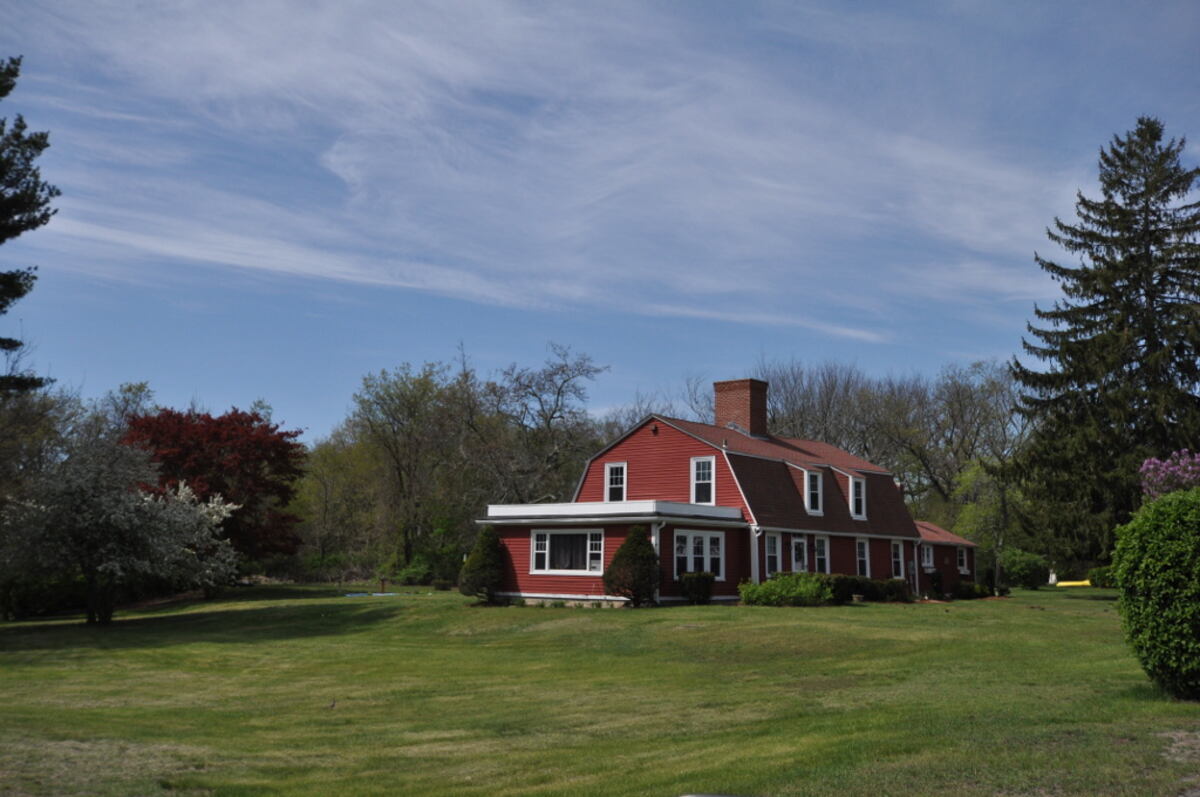
Roger Williams didn’t move to the banks of the Pawtucket River for the grass, but he clearly came to appreciate the lush, green turf that he found. After all, he stayed, right? And all these years later, building on what he found, LawnStarter can offer its findings of the best grass seed for Rhode Island today.
Rhode Island is such a good place to grow grass that today its top crop is sod, according to the nonprofit environmental group ecoRI. But you don’t have to live on a sod farm to grow top turf. Rhode Island is a good place to grow grass — even in your backyard.
To learn how to select the best grass type for Rhode Island, check out our overview for a quick guide.
Grass Growing Zone in Rhode Island
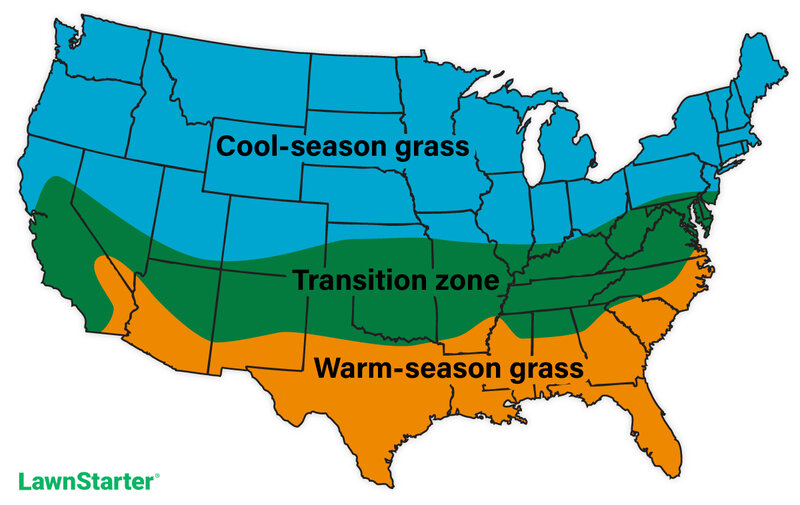
| Cool-Season Grass | |
| During a Rhode Island summer | Late summer is a good time to put down seeds |
| During the winter | Suspend the growth that started in the fall |
| To establish | Seed or sod |
| In Rhode Island’s climate | Most problems start at 90 degrees, and there aren’t enough days of that to be a problem. |
| Annual growth | Should start at the end of February, when soil temperatures reach 40 degrees |
| Dormant period | When temperatures hit 90 degrees, which makes the grasses ideal for Rhode Island |
Best Grasses for Rhode Island: Cool-Season
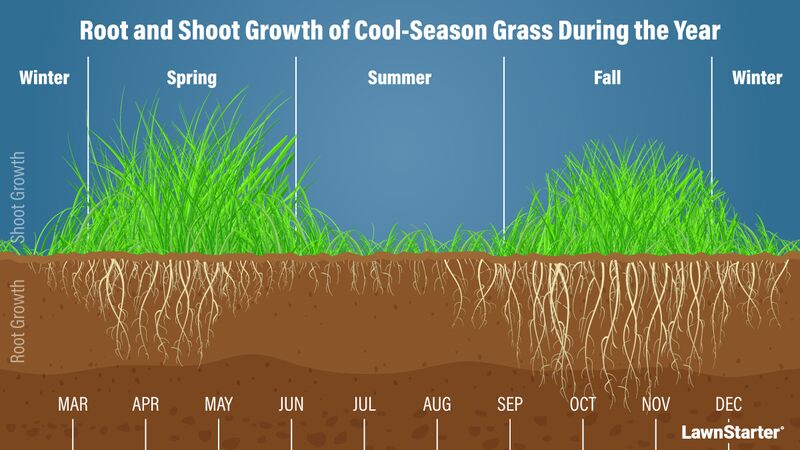
Tall Fescue

Aaron J. Patton, Ph.D. / Turfgrass Extension Specialist at Purdue University
Tall fescue offers a medium to dark green lawn with an extensive and deep root system, something that enables it to grow in a lot of places that aren’t inviting to other grasses. For example, if you have uneven ground, or a lot of shade.
In addition, that root system enables tall fescue to withstand drought conditions better than other grasses. Tall fescue has also proven to do well in areas that get washed with a lot of road salt.
Pro Tip: Fescues are the best grasses for home use, according to the University of Rhode Island (URI). The URI’s point: They need less water, fertilizer, and maintenance. A grass seed mix that includes both turf-type tall fescue and fine fescues “is best,” according to the report.
Classification: Cool-season grass
Spreads by: Produces short rhizomes but has a bunch-type growth habit
Shade tolerance: Moderate
Drought tolerance: Moderate to High
Foot traffic tolerance: Moderate
Maintenance needs: Frequent mowing. Does not produce significant thatch.
Mowing height: Set mowing height to 2 inches when grass reaches 3 inches tall.
Potential for disease: Tolerant of most diseases when properly maintained.
Soil pH: 5.5-6.5
Soil type: Adapted to a wide range of soil conditions, but prefers fertile clay soils with good drainage.
Grass Seed Options:
– Triple-Play Tall Fescue Grass Seed Blend (5000 sq ft)
– Eretz Kentucky 31 K31 Tall Fescue Grass Seed (choose your size)
– Pennington The Rebels Tall Fescue Grass Seed Mix (7 lb.)
Fine Fescue
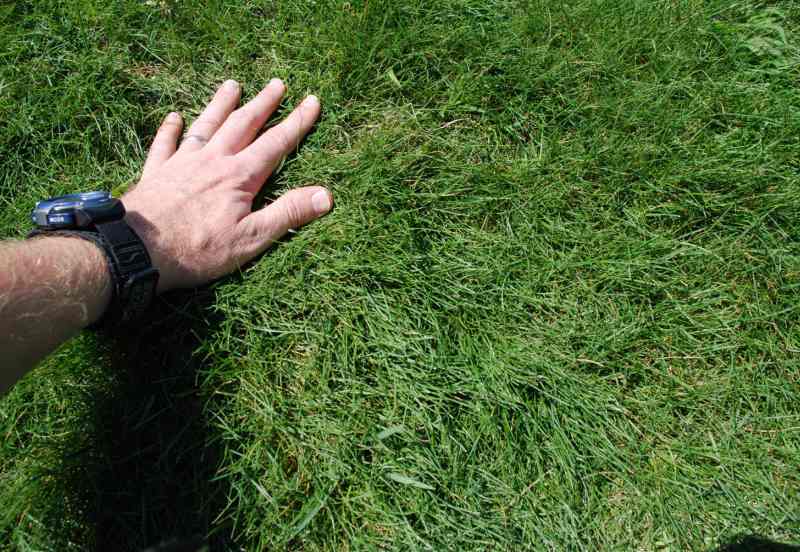
Aaron J. Patton, Ph.D. / Turfgrass Extension Specialist at Purdue University
The fine fescues (creeping red fescue, hard fescue, Chewings fescue, and sheep fescue are the ones suited for Rhode Island) are being used more than ever because of their strengths: They are known for their shade, drought, salt, and cold tolerance, all things that have grown in importance over the last two generations.
Fine fescues do have some problems: They don’t recover well from being walked on (by kids, pets, or neighbors), they are vulnerable to diseases, and are slow to grow.
Classification: Cool-season grass
Spreads by: Creeping red fescue spreads by rhizomes, while other fine fescues are bunch-type grasses, such as Chewings, hard, and sheep fescues.
Shade tolerance: Moderate to High, depending on species
Drought tolerance: Moderate to High, depending on species
Foot traffic tolerance: Low to Moderate, depending on species
Maintenance needs: Low fertilizer and mowing needs. An overall low-maintenance grass.
Mowing height: Set mowing height between 2.5 and 4 inches, depending on species.
Potential for disease: Moderate. Common diseases include red thread, leaf spot, dollar spot, summer patch, and powdery mildew.
Soil pH: 6-6.5
Soil type: Will not perform well in wet soil conditions. Prefers drier soils and tolerates a wide range of soil types and fertility.
Grass Seed Options:
– Outsidepride Legacy Fine Fescue Grass Seed (5 lbs.)
– Eretz Creeping Red Fine Fescue Seed (choose your size)
– Outsidepride Creeping Red Fine Fescue Grass Seed (25 lbs.)
– Outsidepride Hard Fine Fescue Grass Seed (10 lbs.)
Creeping Bentgrass
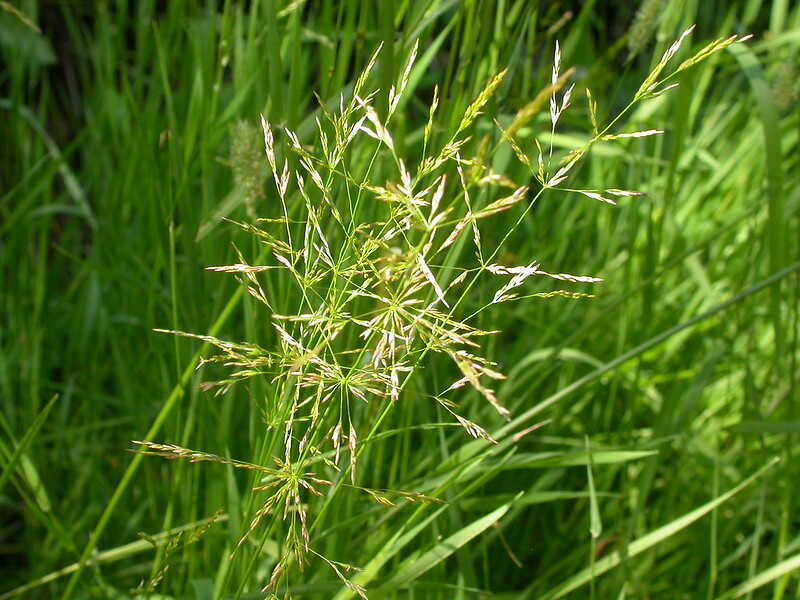
Bentgrass was discovered by settlers in Rhode Island that followed Roger Williams to Providence. But the settlers were simply seeing the long-term potential of a grass that had evolved over centuries under the use of Native peoples.
Creeping bentgrass shot up in popularity as golf boomed in the first half of the twentieth century. It is perfect for putting surfaces: It is thick and can be mowed quite short. However, it is high maintenance, needing frequent watering, mowing, aerating, dethatching, fertilizing, as well as the expertise to know when and how.
Creeping bentgrass isn’t widely used on home lawns, but if you want to put in all that work, you will have a lawn that is a symbol of your heritage … and feels good to walk on.
Classification: Cool-season grass
Spreads by: Stolons
Shade tolerance: Moderate
Drought tolerance: Low
Foot traffic tolerance: Moderate
Maintenance needs: Requires frequent watering, fertilizing, dethatching, and mowing.
Mowing height: Set the mowing height between 0.5 and 0.125 inches.
Potential for disease: High disease potential. Common infections include dollar spot and brown patch.
Soil pH: 5.5-6.5
Soil type: Prefers moist soils with good drainage.
Kentucky Bluegrass

Photo Credit: Shutterstock
Kentucky bluegrass tolerates the cold better than most other turfgrasses, even cool-weather ones, making it a popular choice for use in Rhode Island and throughout New England. It blooms with a lush, green color and bounces back quickly from foot traffic, making it popular not only for homes but for ballfields.
But it does become dormant during drought, something homeowners became acutely aware of during the drought of 2022. In addition, it doesn’t do well in the shade, a problem if you have trees (something ballfields do not have to worry about) or fences. But it loves full sun.
Classification: Cool-season grass
Spreads by: Rhizomes
Shade tolerance: Low
Drought tolerance: Moderate
Foot traffic tolerance: Moderate
Maintenance needs: Moderate mowing frequency and high fertilization needs.
Mowing height: Set mowing height between 2.5 and 3.5 inches.
Potential for disease: Moderate to high; prone to several diseases, such as dollar spot, leaf spot, necrotic ring spot, summer patch, and stripe smut.
Soil pH: 6-7.5
Soil type: Performs best in well-drained, heavy soils with high fertility.
Grass Seed Options:
– Jonathan Green (11970) Blue Panther Kentucky Bluegrass Grass Seed (3 lbs.)
– SeedRanch Midnight Kentucky Bluegrass Seed (5 lbs.)
Perennial Ryegrass
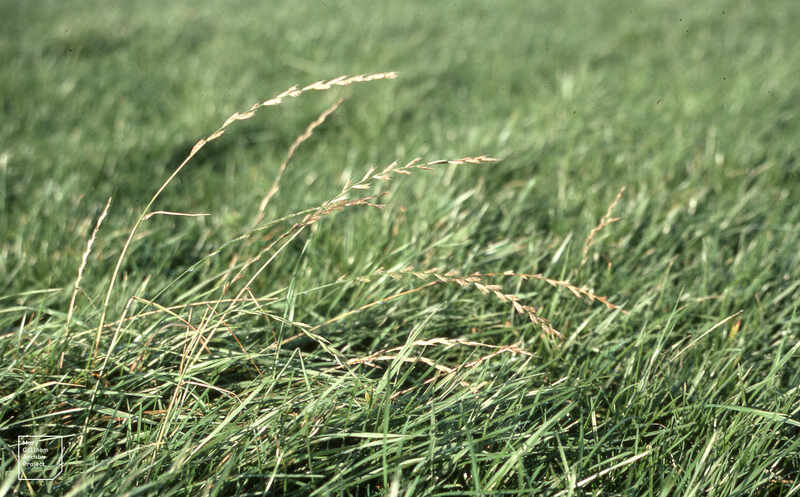
Photo Credit: Dr Mary Gillham Archive Project / Flickr / CC BY 2.0
Perennial ryegrass is a sun-loving grass that produces a soft, fine- to medium-textured lawn. It does not have rhizomes or stolons, so it doesn’t self-repair from the kids playing on it or your lawn party as quickly as Kentucky bluegrass. However, the lack of rhizomes or stolons means less thatch than other grasses.
This grass needs regular watering and will go dormant during a drought. Perennial ryegrass seed is often planted in a seed mix with Kentucky bluegrass or fine fescues due to its fast germination but can also be used on its own.
A pro’s tip: Perennial ryegrass grows low, so it needs less mowing than other grasses. It is a good choice for a home lawn if you like to take weekend trips (and skip a turn in any mowing or landscaping). But plan to overseed in the fall to repair summer wear or bare spots.
Classification: Cool-season grass
Spreads by: Has a bunch-type growth habit
Shade tolerance: Low
Drought tolerance: Low
Foot traffic tolerance: High; it is a high-traffic grass
Maintenance needs: Moderate mowing and fertilization requirements. Thatch is not significant.
Mowing height: Set mowing height to 1.5 to 2.5 inches
Potential for disease: High. Common diseases include gray leaf spot, red thread, and leaf spot/melting-out.
Soil pH: Can grow in soils with a pH between 5 and 8, but prefers between 6 and 7.
Soil type: Prefers good drainage and fertility, but can tolerate some poor drainage.
Grass Seed Options:
– Outsidepride Perennial Ryegrass Seed (5 lbs.)
– Eretz ProTurf Perennial Ryegrass Fine Lawn Seed (choose your size)
Challenges to Growing Grass in Rhode Island
When it comes to selecting the best grass for Rhode Island, you have to account for two specific things: There is too little water, and too much salt:
- Droughts have become a fact of life in Rhode Island. “Severe droughts are projected for the coming decades,” the city of Providence warns on its website. In addition, there were significant droughts most recently in 2000, 2016, 2020, and 2022 according to the National Integrated Drought Information System (NIDIS).
- Salt is becoming more of an issue all the time. Lawns on the coast struggle because of the frequent salt spray and occasional seafloods. But road salt is also being recognized as an issue. It is needed to improve the safety of people using the roads, but it damages the grass in ways that will create problems.
How to Select the Best Grass Type for Rhode Island
Can the Lawn Be Used?
The kids can run wild on it: Perennial ryegrass
You can use it: Kentucky bluegrass, tall fescue, creeping bentgrass
A grass to look at, not really to walk on: Fine fescue
How Often Does It Need Mowing?
It’s a mistake to take a week off: Tall Fescue, creeping bentgrass
It doesn’t grow that fast: Kentucky bluegrass, perennial ryegrass
The growth is slow: Fine fescue
What Are the Maintenance Needs?
High-maintenance grasses: Kentucky bluegrass, creeping bentgrass (it takes watering, fertilizing, dethatching, AND mowing)
It is reasonable: Perennial ryegrass, tall fescue
It is what they mean by low maintenance: Fine fescue
What if it is in the Shade?
Does fine under the trees: Fine fescue
It should be fine, but check it: Tall fescue, creeping bentgrass
Not made for the shade: Kentucky bluegrass, perennial ryegrass
Droughts Are Hitting Rhode Island
Grass that should survive: Fine fescue, tall fescue
Grass that might be OK: Kentucky bluegrass
Needs water: Perennial ryegrass, creeping bentgrass
Might It Attract Diseases?
It happens a lot: Perennial ryegrass, creeping bentgrass
Be aware of the signs: Kentucky bluegrass
Should be fine: Fine fescue
You shouldn’t have to worry: Tall fescue
How Does it Do in a Salt-Rich Environment?*
Moderate to high salt tolerance: Creeping bentgrass (especially a specific “seashore” cultivar just for this), slender creeping red fescues
Should be okay (moderate tolerance): Perennial ryegrass, tall fescue, strong creeping red fescue
Struggles: Chewings fescue, hard fescue, sheep fescue, Kentucky bluegrass
*Some tolerances vary widely depending on the cultivar
A Call to Action
We all want to have a lush, green lawn waiting for us to use. And we want to use it!
But for that lawn to be there, you have to maintain it. It is the kind of do-it-yourself project that is rewarding and energizing. But it might also be a commitment of time and expertise that you don’t have on your own. Whichever it is, you have to make that decision, and act on it.
Looking for a Rhode Island lawn care pro near you? We have trusted lawn care pros in Providence, Warwick, Cranston, Pawtucket, and many more cities across the Ocean State.
Additional sources:
Main Image Credit: magicpiano / Wikimedia Commons / CC BY-SA 4.0
LawnStarter participates in the Amazon Services LLC Associates Program, an affiliate advertising program. LawnStarter may earn revenue from products promoted in this article.